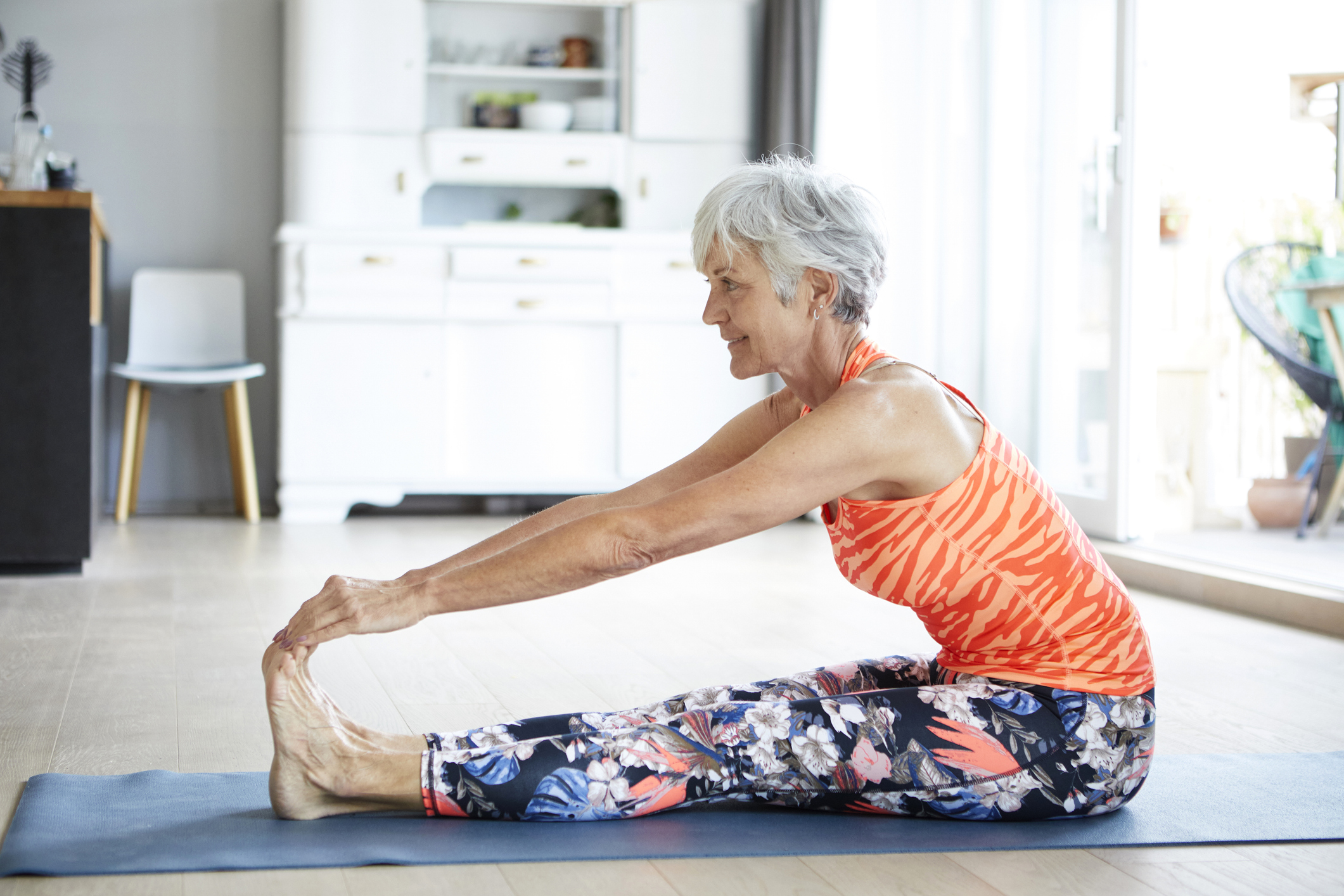Aging is a natural process that brings many changes to our bodies, including decreased muscle mass and bone density, increased risk of chronic diseases and reduced mobility. It becomes more important to take care of our health and fitness to maintain an active and fulfilling lifestyle. We often see older adults living a sedentary life due to physical limitations or societal stereotypes surrounding aging. However, there is always time to make positive changes and elevate your health and fitness.
In this blog post, we will discuss National Senior Health & Fitness Day, explore the benefits of staying physically active and practical tips for stretching into your daily routine. With these insights and tools, you can empower yourself toward a healthier future filled with vitality and enjoyment in your golden years.
National Senior Health & Fitness Day
This week marks the celebration of National Senior Health and Fitness Day, an observance dedicated to emphasizing the significance of staying physically active as we age. Across the nation, local organizations—including health clubs, senior centers, hospitals, and houses of worship—are hosting various health and fitness events to enhance the well-being of older adults in their communities. The theme for 2024, “Make Fitness Your Friend for Life,” encapsulates the event’s mission to encourage seniors to incorporate physical activity into their daily routines.
To mark this occasion, we’ll explore stretching and its benefits for older adults.
Benefits of stretching for a healthy lifestyle
We know that age can bring stiffness and pain and lead people to slow down. One way older adults can combat this is to implement stretching into daily routines.
Regular stretching helps improve joint movement and posture. It also helps increase circulation, balance and coordination.
A study published in the Journal of Gerontology looked at the 12-month results of a stretch and flex program for older adults and reported that participants improved in physical fitness, self-efficacy, well-being and perceived functioning.
Increased flexibility helps:
- Improve your ability to perform daily activities
- Decrease your risk of injury
- Increase blood flow to muscles
Five gentle stretches for older adults
1. Neck stretch
This neck stretch helps relieve tightness and stiffness and maintain mobility in the neck.
Steps:
- Slowly bring your chin toward your chest and turn your head side to side.
- Hold each position for 15 seconds.
2. Seated cat-cow
The seated cat-cow stretch works the core while stretching lower back muscles and promoting spine health.
Steps:
- Start in a seated position in a sturdy chair. Plant your feet firmly on the floor and make sure your knees are at a 90° Place your hands on your knees with your fingers pointing towards each other and the heel of your hands on the outside of your legs.
- Take a deep breath. As you exhale, press into your hands and arch your back using your entire spine. Your face should be facing up toward the ceiling.
- As you inhale, roll your shoulder forward, pull your belly button toward your spine and drop your chin toward your chest.
- Exhale again and reverse the motion. Arch your spine again and press down into your legs.
- Repeat this slowly three to five times.
3. Hamstring stretch
Having tight hamstrings can contribute to pain in your lower back and difficulty walking. This gentle hamstring stretch may help loosen them up.
Steps:
- Get on the floor or a bed, lie on your back and lift one leg perpendicular to your body.
- Hold the back of your thigh and slowly pull the leg toward you while keeping your other leg and hip planted.
- Hold each position for 30 seconds, and don’t pull on your knee.
4. Hip stretch
Older women often hold tension in their hips, which can be made worse by spending extensive time sitting or with crossed legs. This hip stretch will help gently open the hips.
Steps:
- Get on the floor or a bed and lie on your back. Bring one knee out to the side of your body.
- Bend the knee and rest your foot against your straightened leg. Gently push down on the bent knee until you feel a stretch.
- Hold the position for 30 seconds, and then switch legs.
5. Ankle stretch
Keeping your ankles flexible is important for walking, standing up and squatting down. Stiff ankles are often a cause of poor balance.
Steps:
- Start by sitting in a chair and planting with your feet on the ground.
- Slowly move one foot up and down and side to side.
- After 30 seconds, switch to the other foot.
Always consult your doctor before embarking on a new exercise routine. Some stretches may not be right for you if you have previous injuries, are recovering from surgery or have certain health conditions. Please remember never to hold a stretch that hurts or hold your breath while stretching.
In conclusion, aging should never be a reason to neglect our health. National Senior Health & Fitness Day reminds us that older adults should stay as active as possible. Physical activity can improve balance and flexibility and reduce the risk of chronic diseases.
Maxim Healthcare Services offers nationwide home health and personal care if you need additional support.



